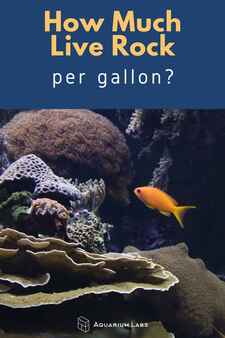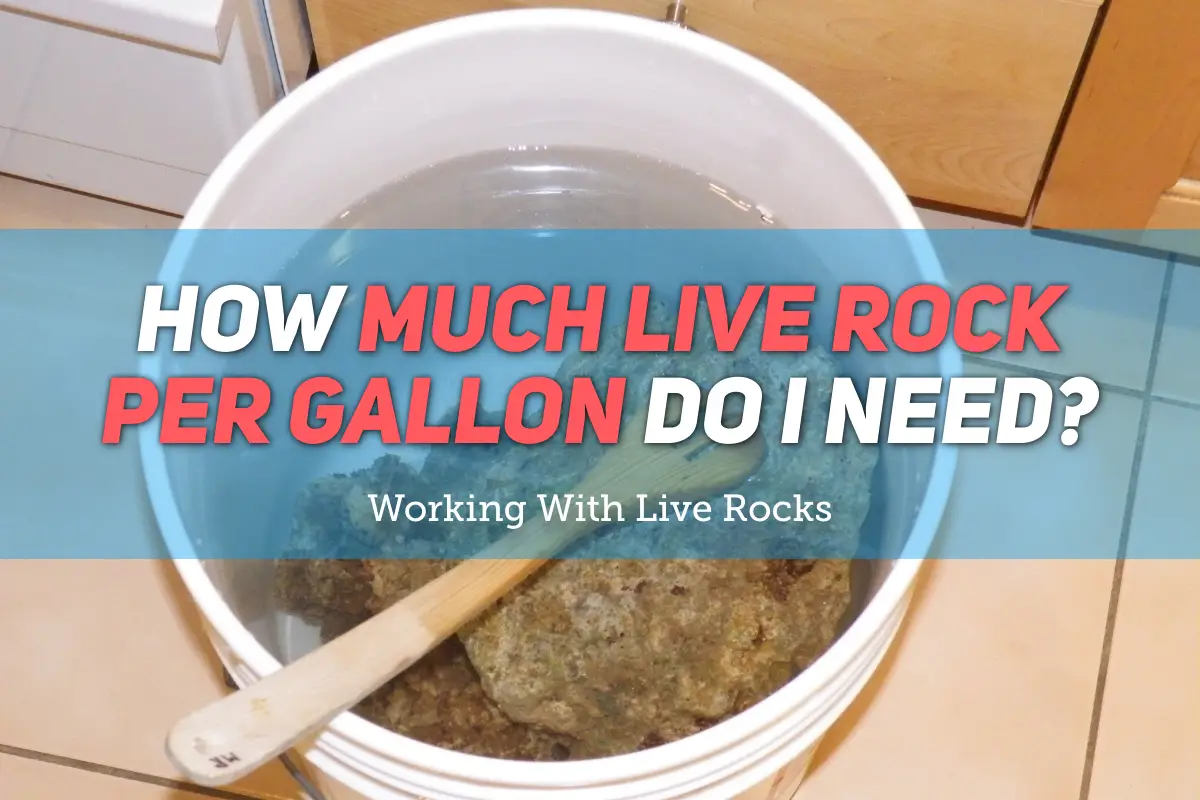If you want to maintain a saltwater aquarium, you should know the different elements they require to be a suitable environment for your marine life. A tank should have more than just water. Adding a healthy foundation and beautiful decorations are an essential and fun part of maintaining your aquarium.
Before you begin adding your marine life, you should be sure you have enough live rock. But how much live rock per gallon is appropriate for your reef tank? We’re here with the answers to the most frequently asked questions about live rock.
What Is Live Rock?
Before we answer your further questions, you should understand what live rock is. The term “live rock” is a misnomer, as these types of stones aren’t alive at all. The name comes from the micro and macro-organisms with live inside and on top of the rock. The rock itself is made from dead coral, calcium carbonate skeletons, or other calcareous organisms.
There are two main types of live rock you can consider for your tank:
- Reef rock. Reef rock is essentially coral or coral rock that comes from outside a reef. Organisms encrust this reef rock after it breaks off and sinks to the bottom of the ocean. Sponges and coralline algae tend to form on these types of stones.
- Inshore rock. This type lives within the coral reef. Clams, crabs, mussels, shrimp, macroalgae, and other unwanted organisms cover it. It’s denser and tends to stabilize an aquarium slower than reef rock.
You can also add a mix of dead base rock to balance out your saltwater aquarium. These are rocks with no life on them, which are designed so you can build a live foundation on top. Once you’ve mixed the two in your tank, your dead base rock will slowly become live rock. You can then add more advanced forms of life on top of this.
Is It That Important?
The marine animals you are going to buy are initially from the ocean, even if they have been captive-bred. This means it’s important to replicate the ocean ecosystem as closely as possible. You shouldn’t only consider the saltwater – ocean water bacteria is essential as well. It allows your organisms to live a long, healthy life.
That being said, live rock serves as the backbone of your tank’s success. That’s because the organisms they are home to provide denitrifying bacteria that clean the tank. All living organisms produce waste containing ammonia. This is potentially a very toxic substance if it is not kept in check. Live rock prevents fish from burning their gills and killing themselves while swimming in their waste.
Many people are eager to set up their tanks right away. Without stones and sands, adding the correct nutrients to your tank can be a long and challenging process for you and any animals you may own. On the other hand, beginning with fully grown or fully cycled live rock can cause it to dead base rock quickly.
How Much Live Rock Do I Need?

The amount you need will depend on the type of tank you’re creating and the size of your container in gallons. If your goal is to create a more open-feeling tank, you may want a pound per gallon for the aesthetics and filtration purposes. However, many aquarium enthusiasts suggest 1.5 to 2 pounds of live rock per gallon of water to create a solid foundation and wall-type effect.
If you want to make your aquarium look like a proper reef, you could have up to 3 pounds of the product per gallon. This will give your tank a stable, aesthetically pleasing rock wall. Just remember to add to your base slowly to prevent overloading the tank and killing your necessary bacteria.
You should also take the density of your live rock into account. Fifty pounds of less dense stone will take up much more space than 50 pounds of a denser product. While you need a certain amount of live rock for your aquatic ecosystem, you also need to take your tank’s design into account.
How Much Does Live Rock Cost Per Pound?
Live rock can cost anywhere from $5 to $12 per pound. If you’re buying used this product for your tank, you may be able to get a deal for $2 to $3 per pound. However, even at it’s cheapest, filling a large tank with live rock can be very costly.
Making the product yourself can help you save money. Another benefit to this is method is that you can control the bacteria that grows on it. However, it will take more time and effort to do this yourself. Always consider your budget when deciding on the kind of live rock you’re buying.
It’s not a requirement to buy your live rock all at once, either. You may purchase a certain amount and realize it’s not the look you want to achieve. Adding slowly may even prove better for your tank’s ecosystem if you maintain its nitrates and ammonia levels.
Skimping on the tank’s filtration system can prove harmful for your marine animals in the future. It’s best to invest as much as possible, even if it takes you longer to save the money.
How Much Live Rock Do I Need for a 75-Gallon Tank?
The equation to solve the amount of rock you need is straightforward. You multiply the number of gallons in your tank by the number of pounds per gallon you’d like. Therefore, you would need 112.5 to 150 pounds of live rock for a 75-gallon tank to achieve 1.5 to 2 pounds per gallon.
Shopping Online Vs. In-Person
Shopping for live rock online versus in person can be a vastly different experience as well as cost. In most cases, it’s best to purchase this product from a wholesaler or local fish store. However, shopping online can have its benefits at an added cost.
If you visit a local fish store, make sure you can see and smell the product in person. This way, you can tell whether it has dying growth or a bad odor. These are markers that the stone is still curing and needs time before you introduce it to the tank. It’s best to buy live rock that’s fully cured, so there is less hassle.
Buying online can become expensive due to shipping costs. Not only are you buying pounds upon pounds of rock, but there is also added weight from the water. Live rock should always ship submerged in water, so it’s appropriately cured and ready to put in your tank.
Summary
Live rock is a necessary filtration system, as well as an aesthetic element to your saltwater aquarium. Though it’s an expensive material, some alternatives will allow you to save money and keep your tank healthy. There are many different ways to get good quality and useful organic material out there to consider.
Once you’ve cured your live rock, make sure you add your fish and other organisms slowly. They should live in a properly-tested environment with plenty of room to move and hide in the rocks. Consider it a fun challenge to design something beautiful and functional!
Related Post:
- The Best Lighting Equipment for Reef Tanks
- The Ultimate Guide on Live Rock Curing for Saltwater Aquariums or Reef Tanks

